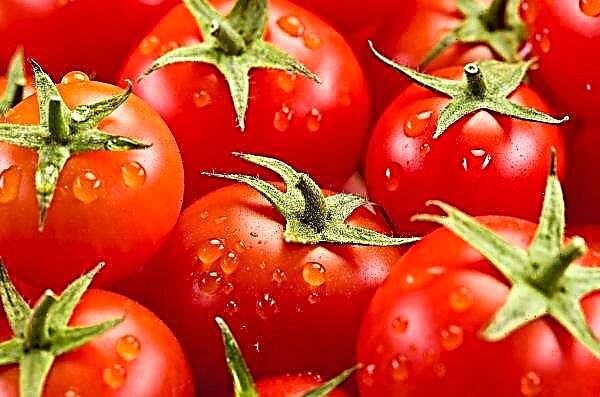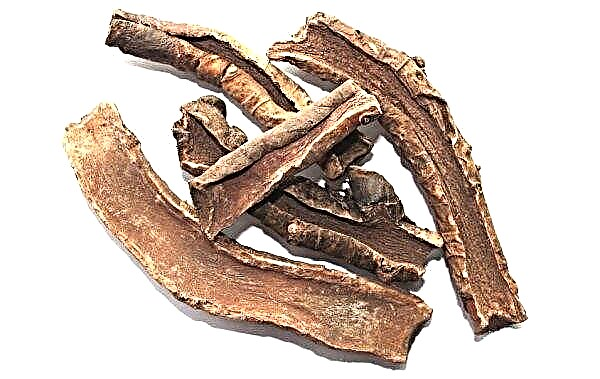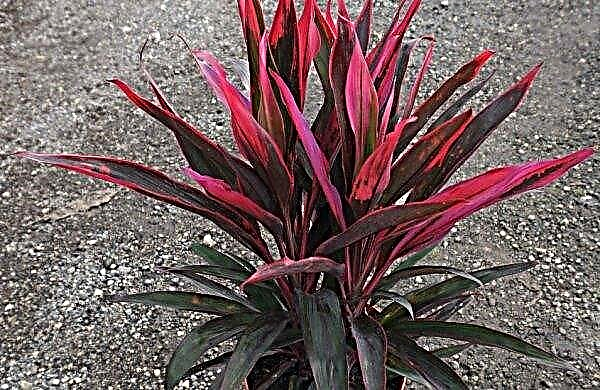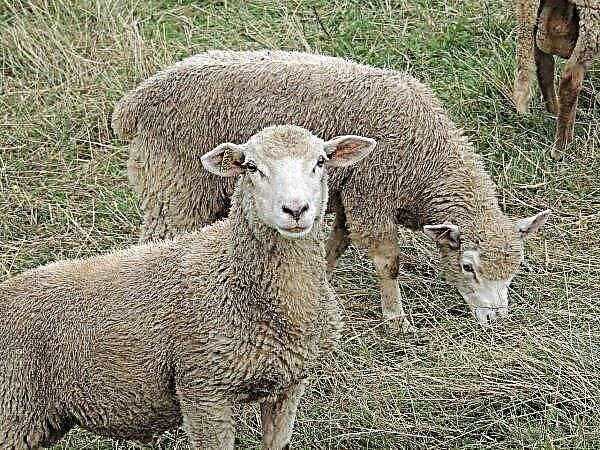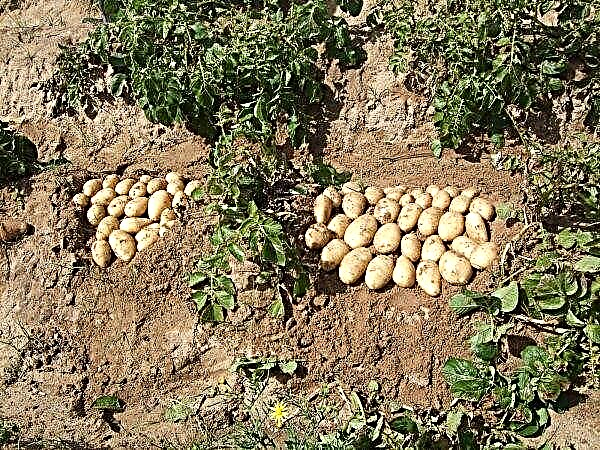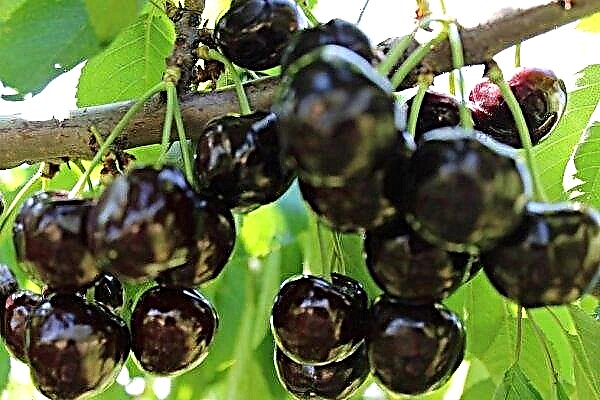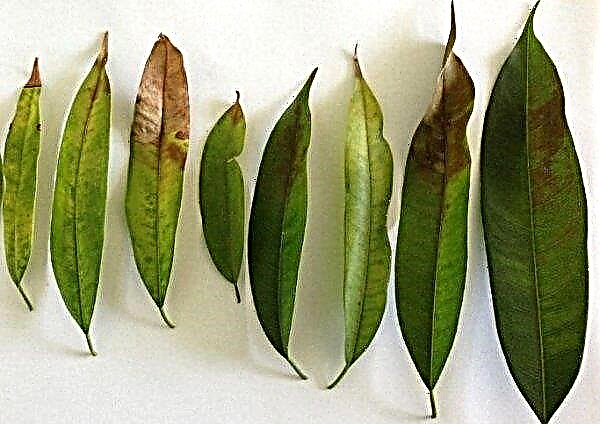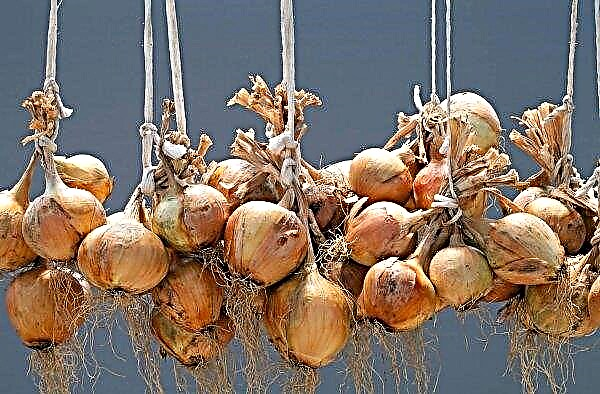For more than a decade, oyster mushroom has been considered one of the main mushroom products. This unpretentious appearance won the hearts of most lovers of forest gifts with its rich taste and delicate pulp. However, even experienced mushroom pickers are not aware of the existing variety of oyster mushrooms. The article describes in detail the main hybrids of the fungus, as well as their detailed description with a photo.
Family oyster
Family oysterPleurotaceae) is a fairly large group of basidiotic cap mushrooms, the natural habitat of which is considered a moderate climatic zone. It consists of a single genus Oyster (Pleurotus), which includes varieties of the fungus, valuable for the food industry.
It is customary to attribute large fruit forms to the mushrooms of the mentioned family, with an average cap diameter of 4–15 cm. However, in some oyster mushrooms it can grow up to 30 cm. The shape of the cap of the young mushroom is mostly flat, with a thin edge, but can be equipped with a small convex formation. As it grows and develops, the hat becomes funnel-shaped or ear-shaped.
The oyster mushroom is solid, lamellar. The plates are rarely or medium thickened, thin, with a width of 3-5 to 15 mm. Each plate begins at the edge of the cap, and then gradually moves to the base of the leg. The leg of oyster mushrooms is small, cone-shaped, thin at the mycelium and thickened in the area of the cap.
Did you know? Mushrooms are considered the most numerous organisms on the planet. Today, about 100 thousand of their varieties are known, while the total number is 2 million species.
The peel of the mushrooms is thin, evenly covers the entire fruiting body. The color of young oyster mushrooms is slightly grayish or cream tones, while the leg is lighter. As it grows, the color of the cap changes to gray, slightly pinkish or bluish, and the leg may turn yellow. The mushroom pulp is dense, fleshy, moderately watery. The leg is drier, sinewy and dense. Flakes and other formations do not form on the surface of the fungus; it is a species with a perfectly smooth fruiting body.
 Oyster mushroom grows in a small group, often numbering up to 30 fruiting bodies, most of them grow together, forming a single growth point.
Oyster mushroom grows in a small group, often numbering up to 30 fruiting bodies, most of them grow together, forming a single growth point.
Types of oyster mushrooms
Today, mycologists know about 4 dozen hybrids and varieties of this fungus. Most are a product of the natural development of nature and are not only edible, but also have excellent production characteristics. Not every variety manages to please a really delicate and refined taste, so only a few have gained particular popularity.
The most popular hybrid is oyster oyster mushroom (Pleurotus ostreatus) It is unpretentious, and is also able to withstand virtually any sudden changes in weather conditions. This is a large mushroom with a hat with a diameter of up to 15 cm, its shape is round, funnel-shaped, the edges are always turned inside. The skin is dull, gray shades, up to ashen.
Also among the product lovers the oyster mushroom steppe is often popular (Pleurotus eryngii). This is a favorite trophy of every lover of “silent hunting”, which develops on the roots or near the root zone of umbrella plants. A mushroom grows up to 25 cm in diameter and differs in a funnel-shaped hat with a yellow tinge.
Often there is the so-called pulmonary appearance (Pleurotus pulmonarius). This oyster mushroom grows on almost any tree debris in the forest zone and bears fruit from mid-spring to September. You can determine it by a small hat with a diameter of up to 12 cm, fan-shaped. The fungus is predominantly gray in color, but may become yellow in color as it ripens.
Lovers of unusual mushrooms may be pleased with an oyster mushroom (Pleurotus cornucopiae). It lives mainly in the natural environment, on the remains of hardwood and gives a harvest from spring to the first half of autumn. This is a small mushroom, up to 10 cm in diameter, with a horn-like type of structure (the edges are clearly bent upwards). Its color is variable, young fruiting bodies are light gray, adults acquire ocher tones.
The most exotic variety of oyster mushroom is lemon (Pleurotus citrinopileatus), which is often used in addition to food and for decorative purposes. The fungus is distinguished by its miniature shape, the average diameter of the fruiting body does not exceed 6 cm. The shape of the cap in young specimens of the thyroid form, but as it grows, it changes to a funnel shape. The color of the hat is a rich lemon color, while the leg is white or light gray. A view is growing on the remains of deciduous trees, in an area with a temperate monsoon climate.

When and where in nature can you find oyster mushrooms?
All oyster mushrooms are considered saprophytic organisms. This means that the main role of the fungus in the biocenosis is the destruction of dead tissue. The best substrate for the fungus is smoldering wood, which is why it can be found exclusively in the forest, on fallen tree trunks, stumps, as well as old trees. In this case, the fungus often plays the role of the parasite, eating the juices of a slowly withering plant.

Most often, oyster mushrooms can be seen on hardwood trunks. Among them, the favorite species are oak, birch, aspen, willow and mountain ash. At the same time, the type of terrain does not play a key role for the fungus, therefore it can be found both in the forest, among mixed deciduous and pine-deciduous plantations, and in parks, gardens and in personal plots.
The traditional period for collecting "wild" oyster mushrooms is autumn. The main crop is observed from the first half of September to the beginning of October. At the same time, the species tolerates even prolonged temperature drops to 0 ° C. This allows you to observe it in vivo until about mid-December (subject to the appropriate temperature). However, some varieties produce crops in spring or summer (oyster mushroom, steppe).Important! Oyster mushrooms rarely grow on conifers. When collecting in the forest, such mushrooms should be discarded, otherwise there is a high probability of colliding with an unsafe double.

Taste and application in cooking
Oyster mushroom is an edible mushroom, characterized by special taste characteristics. This feature has become the main condition for its popularization not only among mushroom pickers, but also ordinary inhabitants. Despite the rather exotic shape of the bush, each fruiting body has a moderately rich and delicate mushroom taste, as well as aroma. With the culinary treatments, it intensifies, which gives a special zest to any dish.
Did you know? Oyster mushroom became popular during the First World War, when, due to lack of food, an unpretentious mushroom became the basis of food for the starving population. Its industrial cultivation began only in the 60s. XX century
In addition, the heat-treated pulp does not lose elasticity, while the tissues become especially tender. That is why oyster mushroom can easily compete for a place in the daily diet, not only with other types of mushrooms, but also with meat. Most often it is used as the main ingredient for cooking boiled (including soups), stews and fried foods.
Often for this it is combined with all kinds of vegetables, meat or hard cheeses. The product is also actively used for the manufacture of dry and frozen billets, as well as pickles, both cold and hot cooking.
Benefit and possible harm
Varieties of oyster mushrooms are useful for human health, they are a valuable source of vitamins and minerals. In addition, the mushroom is not inferior to meat products in terms of nutrition and the amount of protein. At the same time, the amino acids contained in it are absorbed by about 80%, which is a record indicator, and the amount of fat is minimal.

- When you include oyster mushrooms in the diet, the opportunity appears:
- maintain optimal body weight and fitness;
- improve immunity;
- protect the heart and kidneys from pathologies;
- normalize digestion and intestinal microflora;
- naturally remove toxins from the body;
- lower blood sugar (with diabetes);
- protect yourself from high blood cholesterol and atherosclerosis.
However, in some situations, the product may be harmful. It is not recommended to abuse the fungus, overeating threatens with heaviness in the stomach, flatulence, diarrhea and other manifestations of an upset gastrointestinal tract. Allergy sufferers can also cause oyster mushrooms, causing the corresponding manifestations of the disease (suffocation, urticaria, redness of the skin, runny nose).
Important! In chronic pathologies of the heart and kidneys, oyster mushrooms can provoke an exacerbation of the disease. In this case, they are included in food only after consulting with doctors.
Mushrooms are also prohibited in the diet of young children under the age of 12 years and the elderly. They can negatively affect digestion and cause indigestion.
Growing at home
For many, the discovery will be the fact that oyster mushroom is a leader in home growing. Her cultivation does not require a whole complex of specific skills and knowledge, therefore, even a novice mushroom grower can do it. However, this will require simulating wild forest conditions.The easiest way to grow a crop of oyster oyster mushrooms on an old log or wooden block, at the same time, it is best that the aspen, oak, birch or mountain ash become the basis for the oyster beds.
To do this, you need:
- In a moist and shaded place, dig a hole to the size of the log so that it can be deepened into the soil by 10-15 cm. If several wooden substrates are used at once, the distance between the holes should be at least 30-50 cm.
- At the bottom of the fossa, an inoculant from a special store or shredded caps of mature fruit bodies should be placed.
- The tree must be well cleaned of bark, and then placed in a small hole, covered with soil and watered.

Perform the procedure in the first half of May, the first harvests are observed around the beginning of September. Until this time, the beds should be watered periodically, do it about 1 time per week, with a flow rate of 10 liters per 1 m² of soil. Beds bear fruit 2-3 times over 50 days, after which the mycelium falls into suspended animation until the next season. After harvesting, the wooden base can be left in the ground, such a substrate will allow fruiting beds for 3-5 years.
Oyster mushroom is an ideal option for enriching the diet. This mushroom is unpretentious, and is also able to grow and bear fruit in almost any conditions, even in a summer cottage. Today, a huge number of varieties is known, however, only a few are the most common and in demand, among which are oyster mushroom, steppe, pulmonary, carob and lemon.

